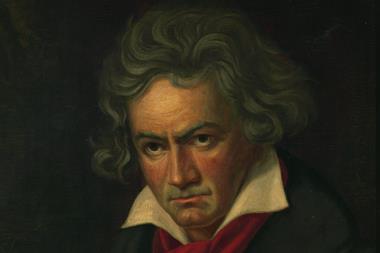From experimenting in the lab to experimenting with sound
Many chemists use music as a way to relax after a hard day in the lab, office or lecture hall. But for a few, their musical talent opens up an entirely different career path. The following seven superstars are just some of the former chemists to be found among the world’s top musicians.
Fletcher Henderson
Chemistry connection: Bachelor’s degree in chemistry and mathematics, lab assistant
Musical talent: Pianist, bandleader, arranger and composer
One of jazz’s most influential arrangers and bandleaders and a key force in developing swing, Henderson moved to New York to pursue a master’s degree in chemistry (although there are no records that show he actually enrolled). He briefly worked as a lab assistant in a Manhattan chemistry firm but changed careers when a job as a song demonstrator for the Pace and Handy Music Co. proved more profitable.
Rahul Ram
Chemistry connection: Bachelor’s and master’s degrees in chemistry, PhD in environmental toxicology
Musical talent: Bass guitarist, composer, singer
Ram’s PhD research inspired him to become an environmental activist. During his time as campaigns coordinator for the Narmada Bachao Andolan (NBA) social movement, he joined the band Indian Ocean, one of the pioneers of fusion rock in India. He is also part of Aisi Taisi Democracy, a political satire group.
Barbara Hendricks
Chemistry connection: Bachelor’s degree in chemistry and mathematics
Musical talent: Operatic soprano
After completing her first bachelor’s degree at the age of 20, Hendricks went on to further study at the Juilliard School of Music, US. She made her professional operatic debut in 1974, later branching out into jazz. She has also performed extensive humanitarian work, particularly focusing on supporting refugees.
Milo Aukerman
Chemistry connection: PhD in biochemistry, research scientist at DuPont
Musical talent: Singer, songwriter
Aukerman is the lead singer of Descendents, one of the pioneers of pop-punk. He left the band after their first album Milo Goes to College came out in 1982 to pursue a biochemistry degree, rejoining the band permanently in 1995. He combined research into crop genetics with his musical career until 2016, when he was laid off by DuPont. Since then he has been a full-time musician.
Clerel
Chemistry connection: Majored in chemistry as an undergraduate
Musical talent: Singer, songwriter and guitarist
Clerel told CBC in 2021 that music helped him get through his studies: ’I sang and I played in my room after I got back from a long afternoon of labs, you know; failed experiments. So it was really more of a little mental health thing.’ After moving to Montreal, Canada after graduation he started participating in open mic nights, eventually giving up his day job to concentrate on music full time.
Robert Bonfiglio
Chemistry connection: Bachelor’s degree in chemistry
Musical talent: Classical harmonica player
Often billed as ‘the Paganini of the harmonica’, Bonfiglio quickly turned to music after his chemistry degree, studying further degrees in composition. After initially working as a session musician he broke through as a concerto soloist in the mid-1980s, going on to perform with a variety of orchestras around the world.
Lejaren Hiller
Chemistry connection: PhD in chemistry, research chemist at DuPont, faculty member
Musical talent: Composer
While teaching chemistry at the University of Illinois, he obtained a master’s degree in composition. His work with an early computer inspired him to explore computing’s potential for making music. He collaborated with Leonard Issacson (another chemist) to create the Illiac Suite, the first piece of music scored by a computer, and later co-developed the Musicomp programming language, using it to compose a number of songs.
Want more music by chemists (and people from closely related fields)? Check out our Spotify playlist, featuring all of the above artists and more.

















1 Reader's comment